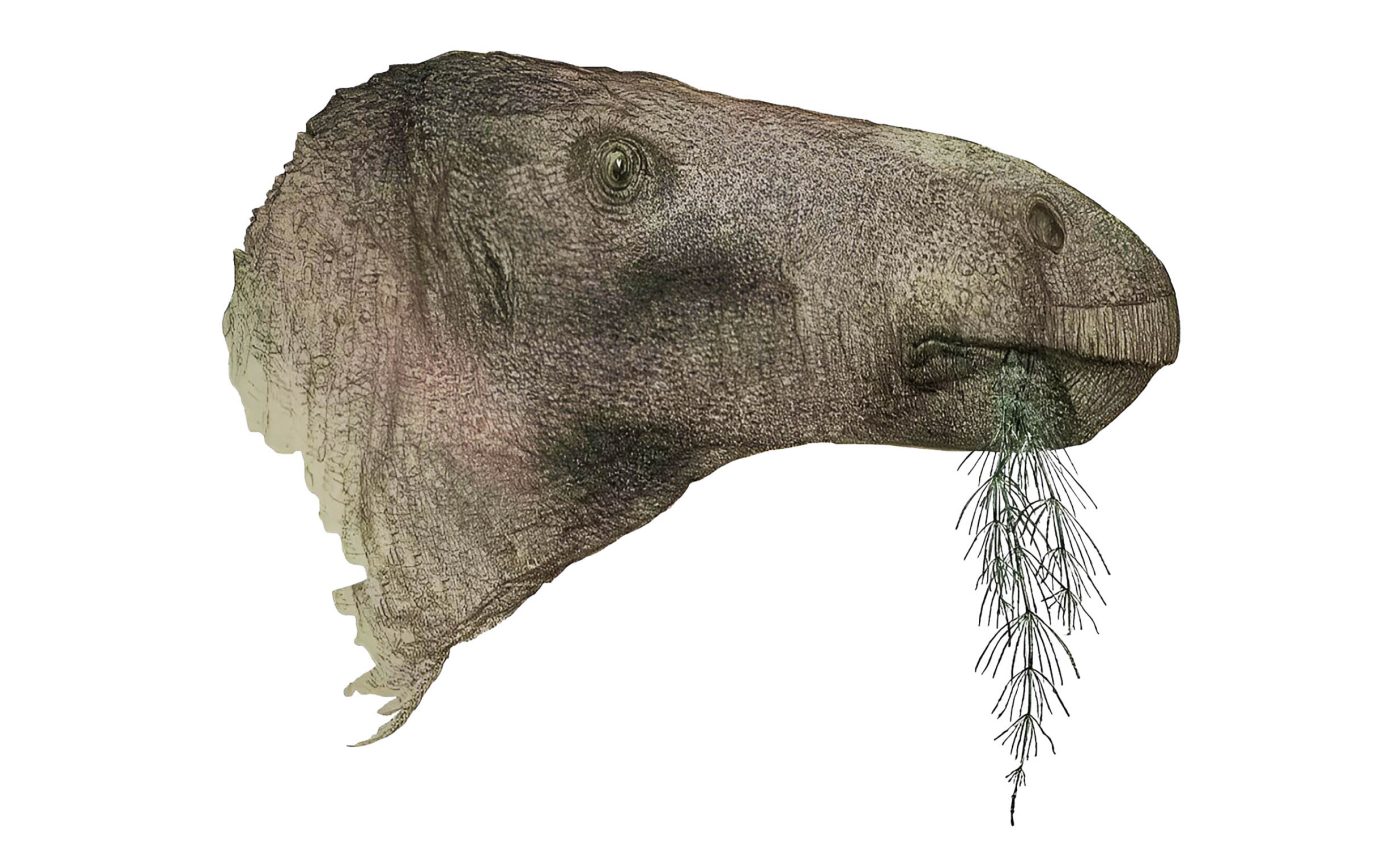
New dinosaur discovery is most complete skeleton ever found
Curiosity, it has driven humanity since the dawn of time. And sometimes, it’s what makes us stumble upon a surprising find on a peaceful walk along the beach. And in this case, we are talking about an incredible discovery of a dinosaur named Comptonatus chasei.
Nick Chase, an avid fossil collector, had managed to unearth a 125-million-year-old dinosaur at Compton Bay, Isle of Wight in 2013.
Unfortunately, Nick couldn’t live to see the full glory of his find, as he passed away due to cancer. But his dedication lives on in the discovery that took the world of paleontology by storm.
Dinosaur enthusiasts Nick and Jeremy
Taking the reins after Nick’s demise, Jeremy Lockwood, a retired GP, and a University of Portsmouth PhD student has been on the front-line of the dinosaur’s analysis.
Lockwood’s journey involved years of examining a massive 149-bone skeleton that lay before him.
Honoring Nick’s commitment and unparalleled knack for fossil hunting, Lockwood christened the new-found genus and species, ‘Comptonatus chasei‘.
“Nick had a phenomenal nose for finding dinosaur bones – he really was a modern-day Mary Anning. He collected fossils daily in all weathers and donated them to museums. I was hoping we’d spend our dotage collecting together as we were of similar ages, but sadly that wasn’t to be the case,” Jeremy recalled.
Despite his many wonderful discoveries over the years, including the most complete Iguanodon skull ever found in Britain, this is the first dinosaur to be named after him.
Cracking the dinosaur genus
Initially thought to be a ‘Mantellisaurus’, the new specimen turned out to play a significant role in unveiling more about dinosaur diversity.
In fact, Comptonatus chasei marks the second genus ever to be described by Lockwood. And what’s more intriguing? Its pubic hip bone was as large as a dinner plate!
Now, if you’re anything like me, you might be wondering, why in the world did this dinosaur need a dinner-plate-sized pubic hip bone?
According to Lockwood, it’s all speculation but possibilities include altered locomotion, better support for stomach contents, or even a unique breathing technique.
Comptonatus chasei and evolving ecosystems
Lockwood’s dinosaur — Comptonatus, a name derived from its discovery site, Compton Bay and ‘tonatus’, Latin for ‘thunderous’ — weighed around a ton, similar to a large male American bison.
Fossil footprints nearby suggest these dinosaurs lived in herds and could have caused quite the rumble when startled by predators!
“Comptonatus is a fantastic dinosaur specimen: one of the most complete to be found in the UK in a century,” ” stated Dr. Susannah Maidment, a senior researcher, and palaeontologist at the Natural History Museum.
“Its recognition as a new species is due to incredibly detailed work by NHM Scientific Associate Dr Jeremy Lockwood, whose research continues to reveal that the diversity of dinosaurs in southern England in the Early Cretaceous was much greater than previously realised.
“The specimen, which is younger than Brighstoneus but older than Mantellisaurus (two iguandontian dinosaurs closely related to Comptonatus) demonstrate fast rates of evolution in iguandontian dinosaurs during this time period, and could help us understand how ecosystems recovered after a putative extinction event at the end of the Jurassic Period.”
Implications of Comptonatus chasei discovery
The Isle of Wight has witnessed an astonishing increase in new dinosaur species named in the last five years. From four in the entirety of the 1900s to eight new species today.
“This really is a remarkable find. It helps us understand more about the different types of dinosaurs that lived in England in the Early Cretaceous. This adds to recent research that shows that Wessex was one of the world’s most diverse ecosystems,” Lockwood beams with pride.
The fossil now graces the collections at the Dinosaur Isle Museum in Sandown on the Isle of Wight.
“This extraordinary discovery at National Trust’s Compton Bay highlights the rich natural heritage of the Isle of Wight…We are thrilled to be part of this ongoing journey of discovery and scientific advancement,” stated Mike Greenslade, General Manager for the National Trust on the Isle of Wight.
This tale of dinosaur genus discovery reminds us of the wonders that lay beneath the soils and the seas, waiting to be unearthed. It calls on us to explore, to learn, and to understand the world that existed before us.
The paper is published today in the Journal of Systematic Palaeontology.
—–
Like what you read? Subscribe to our newsletter for engaging articles, exclusive content, and the latest updates.
Check us out on EarthSnap, a free app brought to you by Eric Ralls and Earth.com.
—–














